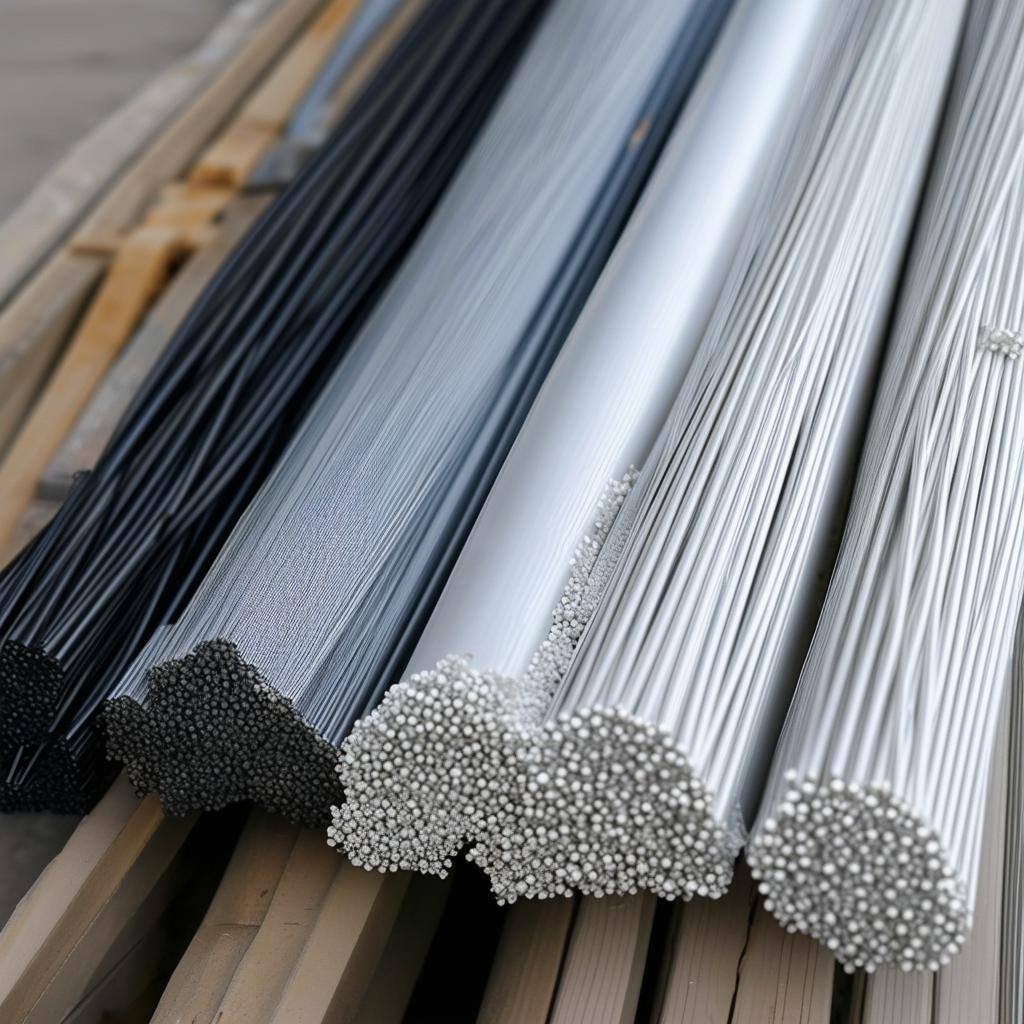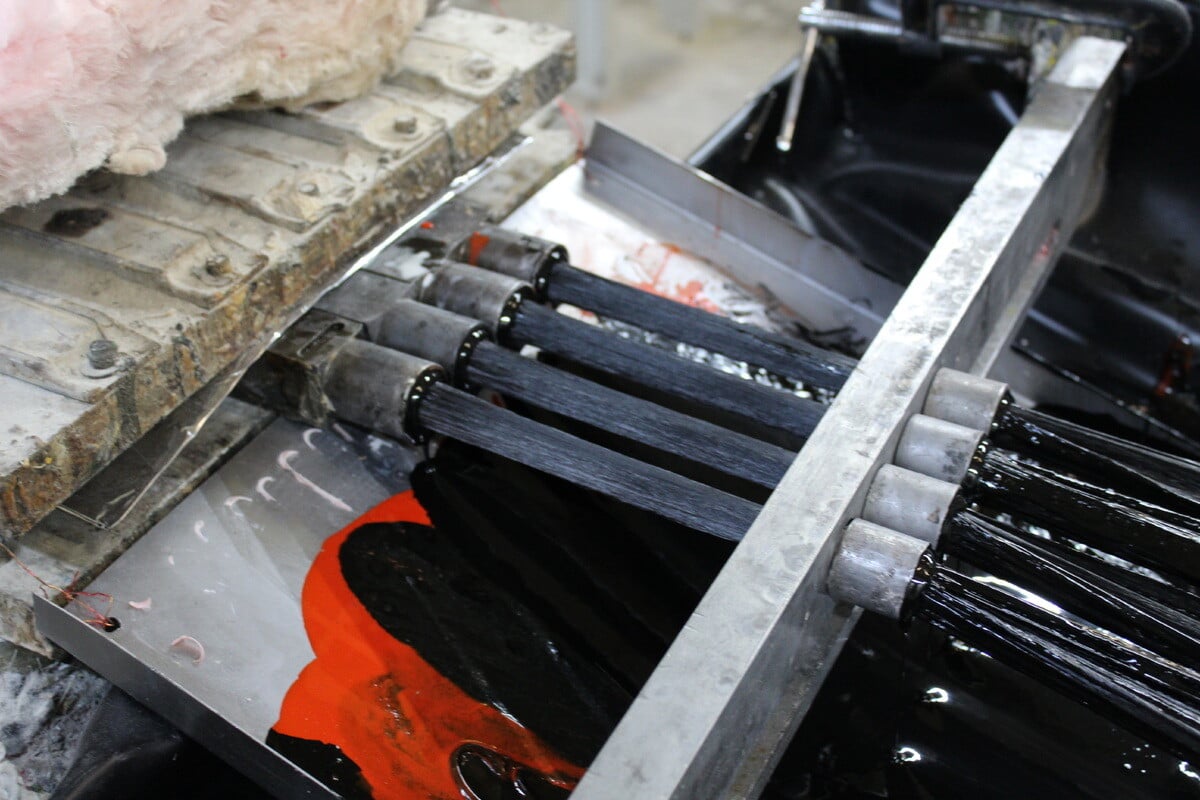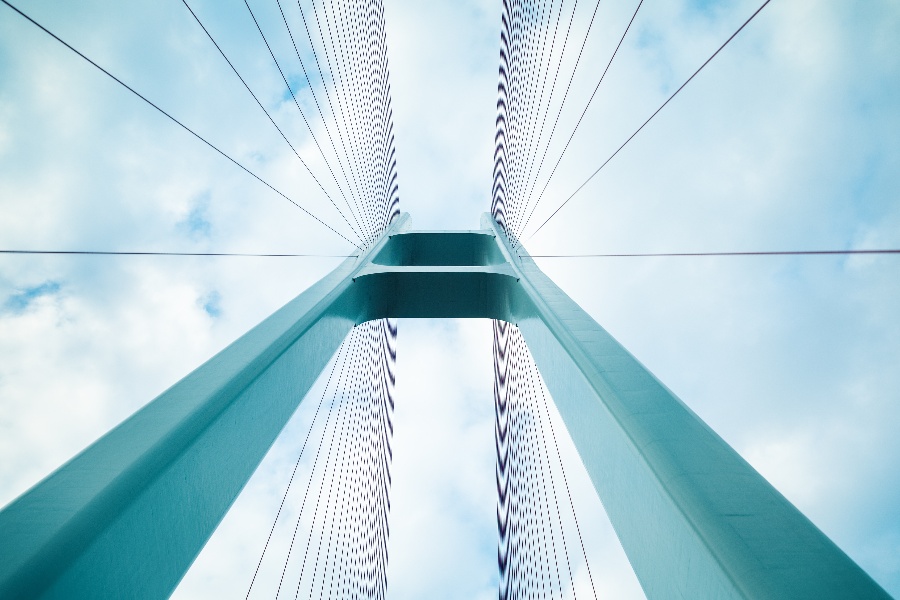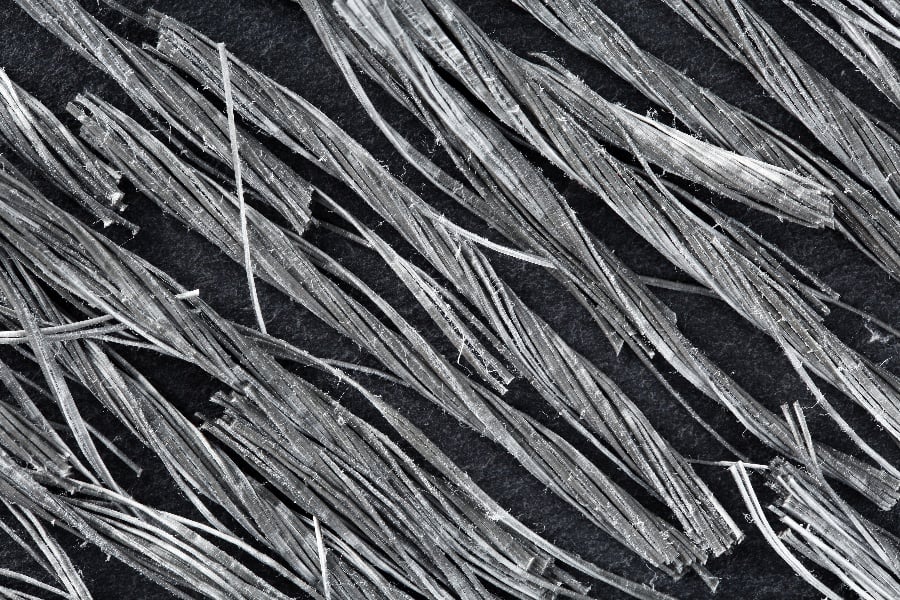
The construction industry is always on the hunt for better alternatives to traditionally used materials like wood, steel and aluminum. Emerging as a viable alternative for a variety of infrastructure and building projects is a composite material known as fiber reinforced polymer (FRP) or fiberglass.
A FRP product is created when reinforced fibers and liquid resin are combined to form and then shaped into bars of various shapes and sizes. The result is a consolidated, stronger composite.
FRP composite profiles are made in a pultrusion process. Pultrusion is an uninterrupted process of using fiber reinforcements or other resin matrices to produce cross-sectional materials.
A combination of two terms, pultrusion is a method of manufacturing involving ‘pull’ and ‘extrusion’. The process involves pulling the raw materials, as opposed to extrusion, which works through pushing.
How Are FRPs Manufactured?
It boils down to the way FRP composites are created. The fiber rovings are fed into the pultrusion machine with the strength level consistent throughout the entire product.
Fabrics, mats, and other rolled goods as reinforcements along with the rovings are pulled through the machine as well. This combination of reinforcing materials along with the polymer are the building blocks to form the composite. The rovings as well as some or all of other reinforcing materials then get pulled through the “wet-out” stage in which they are soaked in a liquid resin.
As the rovings submerge, they become soaked by the resin, which improves the composition of the product. Prior to this point in the process, different colors and additives can be added and mixed into the resin. Finally, the product will be formed and cured: the resulting composite can be resistant to impact, ultra-violet rays, corrosion, and heat.
It is possible to customize the composition of the FRP by varying the resin systems and glass content to produce pultruded fiberglass bars with different properties to meet specific requirements. And, companies are able to tailor the pultruded profiles by requesting customized colors to be added to the resin or produced for outdoor applications by applying a UV-resistant treatment during the pultrusion process.
Advantages Of Pultruded Fiberglass Profiles
Pultruded profiles come with number benefits. Here are the top 7:
1. FRP bars have exceptional tensile strength. The continuous length of reinforcing fibers gives the pultruded product exceptional tensile strength.
2. Pultruded fiberglass bars maintain their shapes in humid or high-heat conditions. FRP bars can be up to 30% lighter than aluminum and 70% lighter than steel. At equal weight It is just as strong if not stronger than steel and is significantly less likely to be dented or deformed than metals used in construction. As pultruded fiberglass bars are lightweight and durable, they are easy to handle and transport.
3. Pultruded products will require less heavy equipment than steel or wood during transportation and storage. In addition, they are impact-resistant and can retain their shapes upon impact.
4. FRP products are resistant to a wide range of chemicals and are not affected by oxidation or corrosion. For instance, a fiberglass rebar can withstand harsh weather conditions, continuous rain and water submerged conditions. Corrosion is caused by oxidation and chloride ion-based chemical attacks.
5. Fiberglass bars are an effective barrier for hot or electrically-charged components. Fiberglass-reinforced composites can have a high Glass Transition Temperature (Tg) of about 575°F (302°C). As the highest-ranking Tg pultruded material ever tested, FRP composites are non-conductive, chemical-resistant, and corrosion-resistant at extremely high temperatures.
So, in the event there is a fire inside the building, the support structures made out of appropriately designed FRP composite materials will not buckle even under immense heat and pressure.
Often seen as crossbars, poles, beams, posts, and other types of structural support pieces, pultruded fiberglass profiles will help maintain the integrity of a building in the event of a fire. It can also help retard the spread of that fire.
6. FRP composite pieces do not need to be coated with toxic chemical coatings to FRP composite pieces, and they require little to no maintenance.
7. FRP is EMI/RFI transparent, suitable for specialized applications where metal parts can't be used due to possible interference.
With a lifecycle of 75-150 years, FRPs need little maintenance.
Going Green
The manufacturing and installation of pultruded FRP products are energy-efficient, require less heat, produce less wastage, and cause less pollution. In addition, they can be recycled or added into other plastic-based products.
While composites are stronger than metals, they are lighter. This translates to fuel savings at every stage of transport. As coating for the end product is unnecessary, pultruded material accounts for relatively low CO2 emissions.
In addition, the pultrusion process uses less heat than metal manufacturing which significantly reduces the amount of water needed for cooling.
Pultruded Fiberglass Bar Applications
The FRP rebar ─ a spiral wrapped fiberglass rod ─ is light in weight and easy to transport and handle. Used in concrete reinforcement, the FRP rebar is a non-corrosive alternative for steel rebar. It comprises of two elements namely a fiber and a matrix resin.
The fiber used is usually carbon, aramid, basalt, or glass while the matrix resin is composed of polyester, epoxy, or vinyl ester. Pultruded fiberglass bars are corrosion-resistant, low-maintenance, durable, and lightweight. As a effective alternative to steel, aluminum and wood, its strength and versatility are particularly useful in construction and infrastructure.
And, FRP's durability makes it a preferred choice for many outdoor construction projects as they are easy to cut, shape, and install. Their minimal maintenance requirements lower overall construction costs.
In addition, project managers can request to have unique shapes can be created for specific purposes: for example, pultruded fiberglass I-bars can be used to construct strong and corrosion-resistant walking surfaces while flat beams are a suitable structural component for many construction projects. Other applications for FRP bars include bridge components, corrosion-resistant guardrails, railway crossing arms, and highway sound barriers.
Also, it is electrically non-conductive and thermally non expansive. It efficiently resists heat transfer and possesses greater tensile strength than steel. On a global basis, the major factors spurring the use of composites is that FRP rebars are non-corrosive and are sustainable for a longer period of time than traditional rebars.
The pultruded fiberglass market is expected to grow in the next 5 years as it grows more popular. According to market research company Industry Arc, the FRP Rebar market size is expected to experience a steep growth incline, growing at a compound annual growth rate (CAGR) of 12.1% from 2020-2025, reaching $1.1 billion by 2025.
Around the globe, many of the more advanced countries are now relying on green construction methods to save resources and provide buildings with a long service life. Pultruded profiles are becoming increasingly popular in constructing infrastructure, large structures, bridges, and commercial buildings.
Talk to Us
If you are interested to know more about pultruded products, talk to us. You can choose exactly what sort of pieces you need and even have pigments added to the resin mixture for color or patterns.
Get in touch with our team of specialists today. We can help you create custom FRP composites pieces for your next project.















